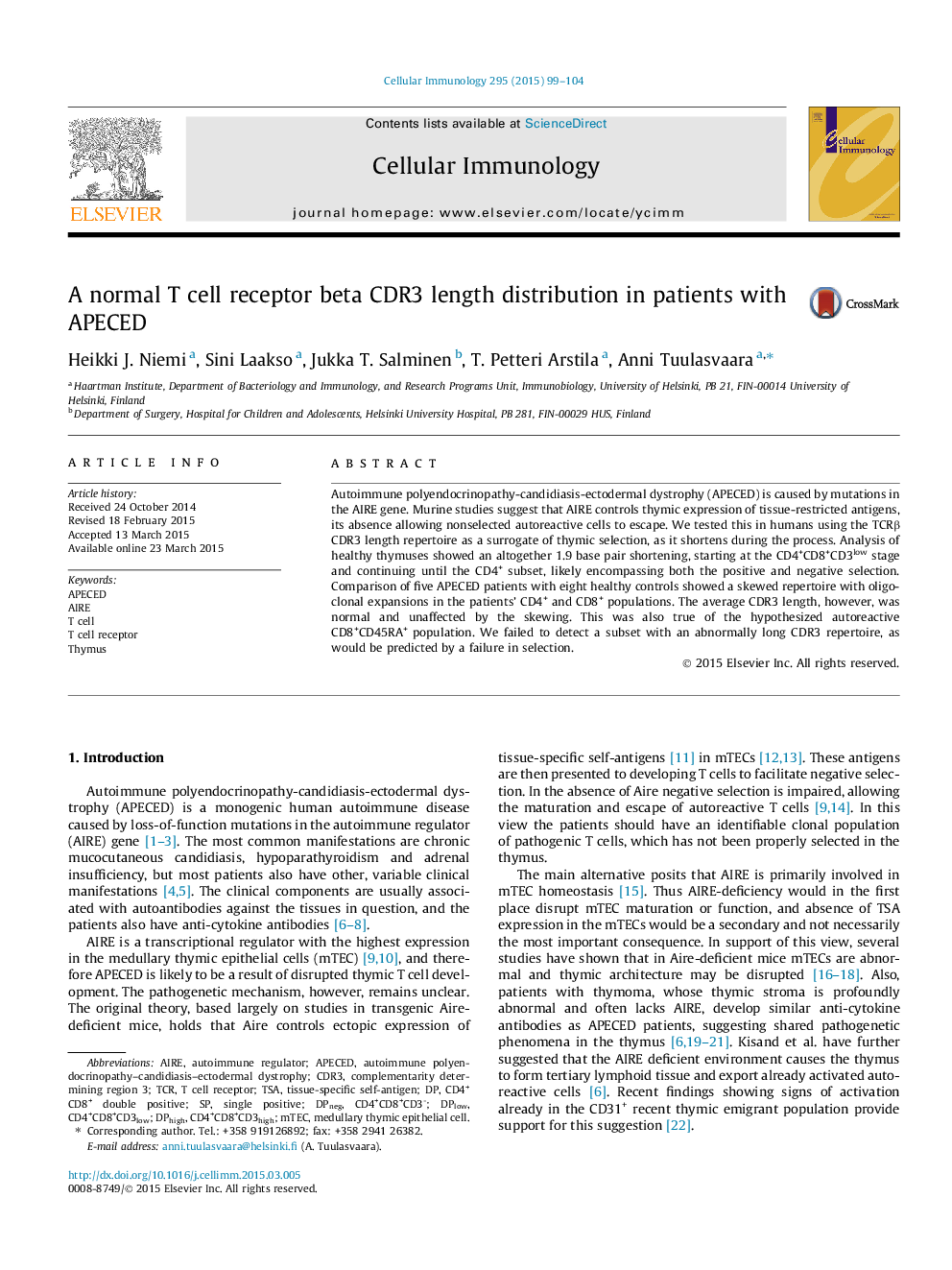| Article ID | Journal | Published Year | Pages | File Type |
|---|---|---|---|---|
| 10926989 | Cellular Immunology | 2015 | 6 Pages |
Abstract
Autoimmune polyendocrinopathy-candidiasis-ectodermal dystrophy (APECED) is caused by mutations in the AIRE gene. Murine studies suggest that AIRE controls thymic expression of tissue-restricted antigens, its absence allowing nonselected autoreactive cells to escape. We tested this in humans using the TCRβ CDR3 length repertoire as a surrogate of thymic selection, as it shortens during the process. Analysis of healthy thymuses showed an altogether 1.9 base pair shortening, starting at the CD4+CD8+CD3low stage and continuing until the CD4+ subset, likely encompassing both the positive and negative selection. Comparison of five APECED patients with eight healthy controls showed a skewed repertoire with oligoclonal expansions in the patients' CD4+ and CD8+ populations. The average CDR3 length, however, was normal and unaffected by the skewing. This was also true of the hypothesized autoreactive CD8+CD45RA+ population. We failed to detect a subset with an abnormally long CDR3 repertoire, as would be predicted by a failure in selection.
Keywords
Related Topics
Life Sciences
Biochemistry, Genetics and Molecular Biology
Cell Biology
Authors
Heikki J. Niemi, Sini Laakso, Jukka T. Salminen, T. Petteri Arstila, Anni Tuulasvaara,
